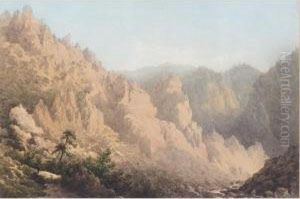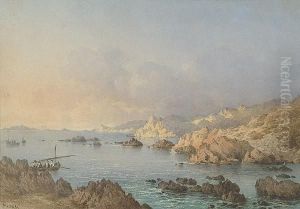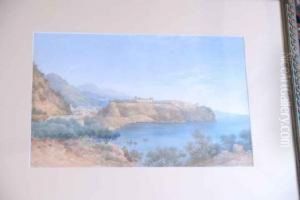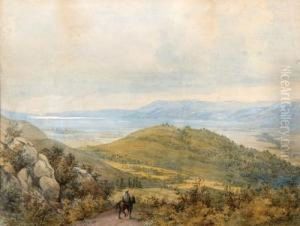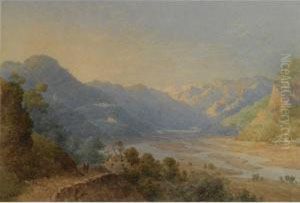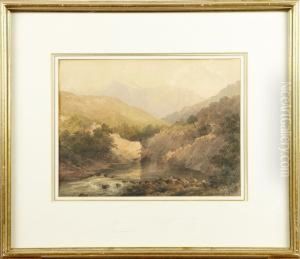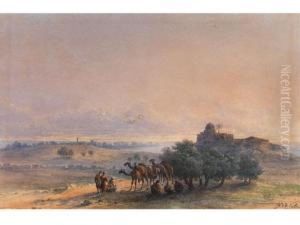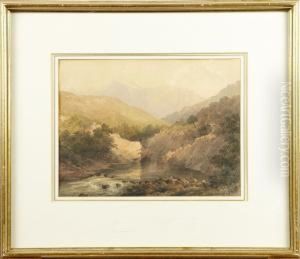Charles W. Meredith Van De Velde Paintings
Charles William Meredith van de Velde was a multifaceted individual born in 1818, whose talents spanned across various disciplines including art, cartography, and the military. Hailing from a Dutch background, Van De Velde's contributions to the arts and sciences were marked by his extensive travels and keen observational skills.
Initially embarking on a career in the navy, Van De Velde's naval experiences significantly influenced his later works, particularly in cartography and landscape painting. His naval career provided him with the opportunity to travel widely, particularly in the Near East, where he developed a fascination with the landscapes and people, which would become recurrent themes in his artwork.
After leaving the navy, Van De Velde dedicated himself more fully to his artistic pursuits, gaining recognition for his detailed and atmospheric landscapes. His works often depicted scenes from his travels, capturing the essence and beauty of various locales with a particular focus on lighting and atmospheric effects, which set his work apart from his contemporaries.
Beyond painting, Van De Velde made significant contributions to the field of cartography. His detailed maps were highly valued for their accuracy and detail, reflecting his meticulous nature and the keen eye for detail that was evident in his paintings. These maps were not only practical tools for navigation and exploration but also works of art in their own right, showcasing his ability to blend scientific precision with aesthetic beauty.
Van De Velde's legacy is that of a Renaissance man of the 19th century, whose work crossed the boundaries between art and science. His paintings remain appreciated for their beauty and atmospheric quality, while his maps continue to be studied for their historical and geographical significance. Van De Velde passed away in 1898, leaving behind a body of work that continues to be celebrated for its contribution to both the art world and the field of cartography.
